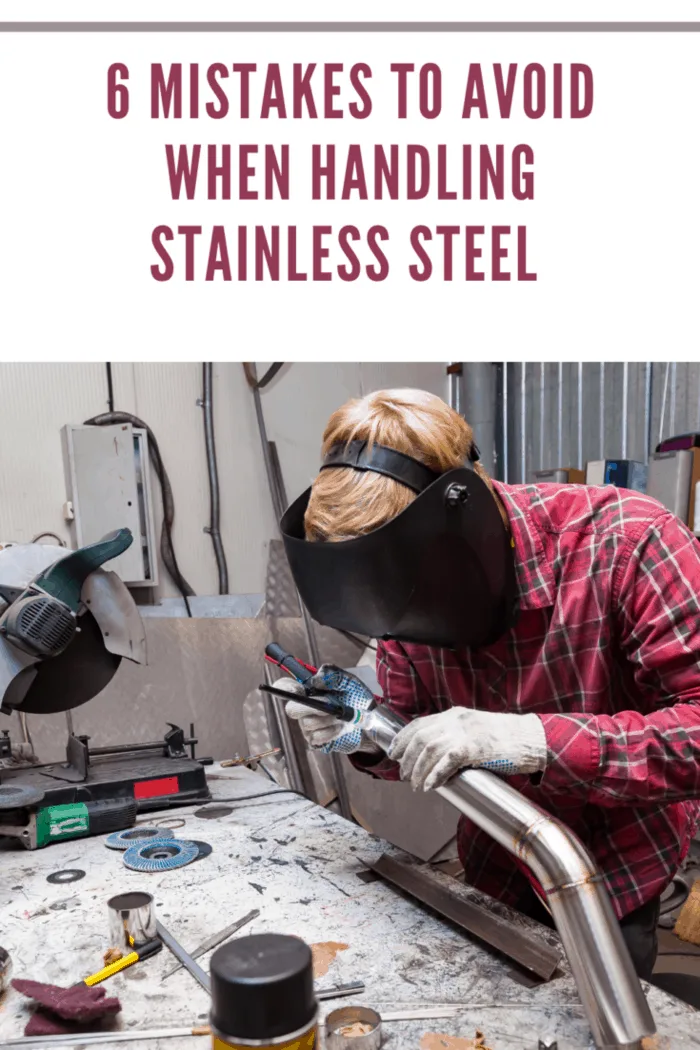One of the most commonly used materials in the steel sector is stainless steel. This metal is an alloy of chromium and iron, which is notable for its familiar luster, low maintenance, and corrosion resistance.
When you’re set to work on stainless steel for whatever application, you need to have a working knowledge of this metal. Mistakes could cause corrosion, warping, and even metallurgical changes on stainless steel. Working with this metal incorrectly can also result in all kinds of expensive and potentially dangerous problems.
When you’re handling stainless steel, avoid these blunders:
Improper Cleaning
A common mistake that steel fabricators make is simply rushing through a stainless steel project and skipping important cleaning steps. Remember that the surface of this material requires thorough cleaning before you work with it. Some material workers believe that the heat during the welding process (science) will burn off any residue on the steel. This, however, isn’t always the case.
By skipping cleaning the steel surface, dust, iron filings, and oils could result in all sorts of problems. Many of these mentioned materials are flammable. This could cause the area they’re resting on to heat up more than the rest of the steel. This leads to unbalanced metal integrity once steel cools.
So make sure that you adhere to the proper cleaning procedures to avoid compromising stainless steel. This includes weld cleaning if you’re going to be welding steel. When cleaning stainless steel welds, use a weld cleaning machine, such as TIG BRUSH to accelerate the process of passivating and cleaning the surface concurrently.
Also, don’t forget to rinse stainless steel after cleaning. Failure to do this can result in unsightly water spots. When cleaning this metal, avoid using cleaners that contain bleach or chlorine. Instead, use a soft cloth and warm water. Gently clean the material and rinse it thoroughly. After rinsing, use a soft towel to dry the metal to prevent water spots.

Introducing Surface Contaminants
Steelworkers can knowingly or unknowingly introduce a variety of surface contaminants while handling stainless steel. Environmental contaminants, for instance, can get onto the surface while the material is sitting in the fabrication area.
You can avoid surface contamination of stainless steel by doing the following:
- Get rid of adhesives used in transporting stainless steel – these adhesives can harden and result in crevice corrosion on the site
- Keep the material protected from the elements as long as possible
- Store stainless steel separately from other metals, such as carbon steel
- Keep stainless steel abrasive products away from other abrasives used on other materials or metals.
- Use an abrasive specifically designed for stainless steel deburring, blending, and grinding
Allowing Stainless Steel to Become Distorted
Despite the many advantages of stainless steel, this material has a high expansion rate and low thermal conductivity.
This means that you could easily distort the metal during a welding process.
You could avoid distortion by using the lowest possible amperage without undermining the overall quality of the weld.
You can also minimize distortion by using controlled tack welding, a copper backing plate, or clamping jigs to hold the metal in place.

Using High Heat during Cutting or Welding
Applying heat to stainless steel is necessary for welding and cutting.
Too much heat during these two processes, however, will cause problems.
Take note that stainless steel is a lot thinner compared to traditional steel.
Applying excess heat during cutting or welding will cause the material to become even thinner under strain.
The metal will eventually warp and bend, forcing you to start over from scratch and use another piece of stainless steel.
So check the heat settings on your welding equipment before you work with stainless steel.
Putting Low Price before Quality
There’s a temptation to cut expenses whenever possible.
However, when handling stainless steel, you should not cut corners.
You need to make sure that your final product will stand the test of time when you are working with this metal.
Make sure that you’re purchasing and using only top-quality stainless steel and fabrication tools and equipment.
What’s more, you should invest in quality assurance, so that your final product will meet your expectations or the standards set by your client.
Not Valuing Safety in the Workplace
You need to prioritize safety at all times when you’re handling stainless steel or any kind of metal. Disregarding safety rules can lead to accidents and even fatalities.
Before you proceed with any stainless steel task, make sure you are following a strict set of safety standards enforced by your project manager or safety officer, says Cody Mays
Stainless steel is an excellent material to work with but treat it with the respect it deserves. Avoid making these six blunders when you’re handling stainless steel.
